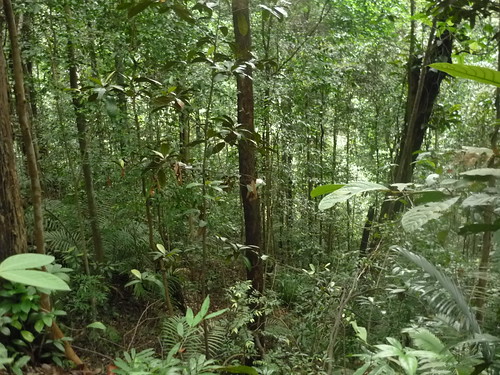
Despite my passion and interest in exploring our wild places, I have to say that I have neglected the forests of the Central Nature Reserves. Including today's trip, I have visited Bukit Timah Nature Reserve only a miserable 5 times in my entire life.
Today wasn't supposed to be a relaxing hike up and down the hill; this was meant to be a training session in preparation for my trip to climb Mount Kinabalu in December. Still, I did stop to take photos whenever possible.
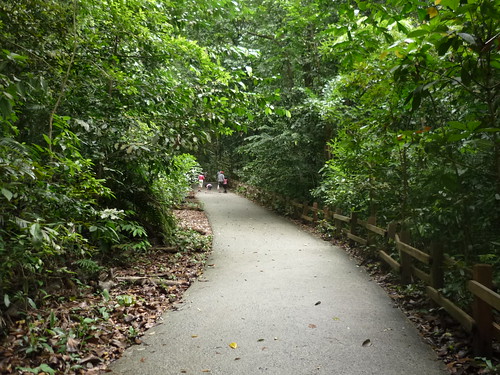
I started up the Main Road, then took the Rock Path, which was a path I had never used before.
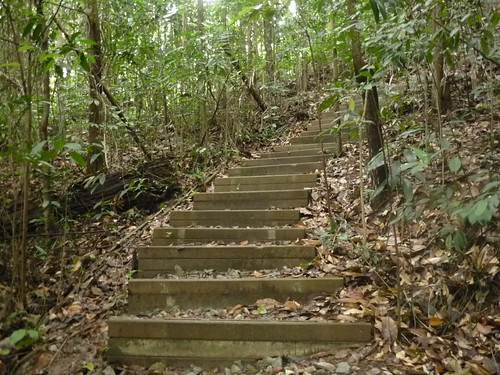
There's something about walking down narrow forest trails that never fails to remind me of the time I spent in the Maliau Basin in 2007. Especially when the trail soon forces you to grab onto tree trunks, or even get down on all fours as you scramble over obstacles. One big difference though is the absence of bloodthirsty leeches.

Despite it being a weekend, there were not many people using these trails, possibly because of the somewhat rainy weather. At least it didn't rain while I was there, and it did make for a relatively pleasant and cooling hike through the forest.
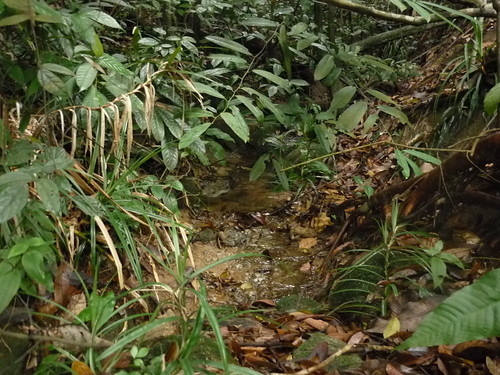
It's always nice to stop for a break at one of these small forest streams.
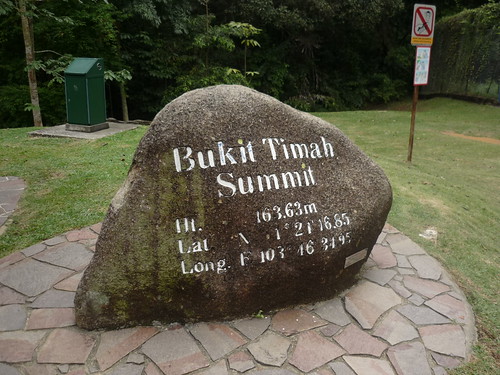
After scaling the Rock Path, I went up the Summit Path, and finally reached the highest point in Singapore.

The reason behind such a blatant showcase of stupidity still eludes me.
I continued down the Rengas Path.
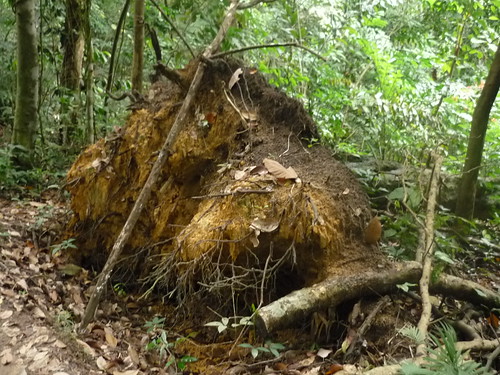
Signs of treefall are everywhere, but this is probably a very recent case. While trees die and fall all the time, it does raise a lot of questions about the continued health of our rainforests.
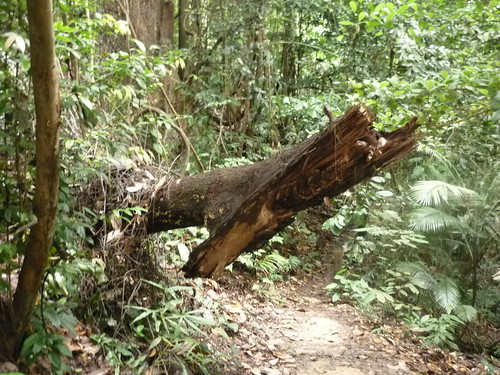
Are our trees dying at an especially high rate? And if so, what could be the reason? Accelerated erosion from trampling? Changes in the microclimate of the forest due to opening up of trails, leading to increase in penetration of sunlight, decrease in humidity, loss of moisture and stability of the soil?
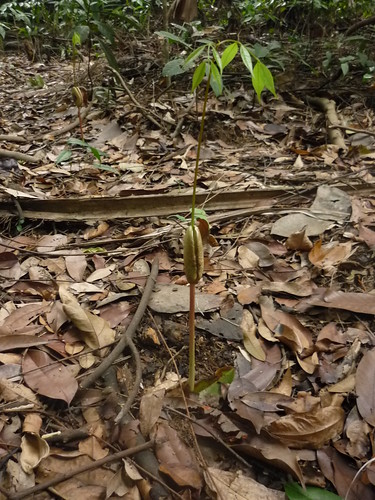
And even if trees are dying at apparently normal rates comparable to more pristine habitats, one wonders about recruitment of seedlings. Are enough seedlings germinating and surviving to replace their fallen predecessors? How has the loss of many of our large frugivores affected the dispersal of seeds? The tangled and intricate tapestry that links a multitude of species is especially apparent in rainforest ecosystems.
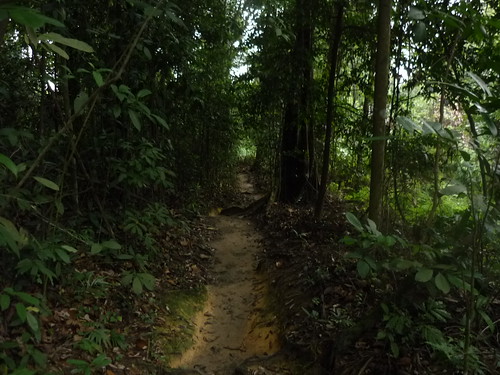
The Dairy Farm Loop branches off the Rengas Path. This was another trail I had yet to visit.
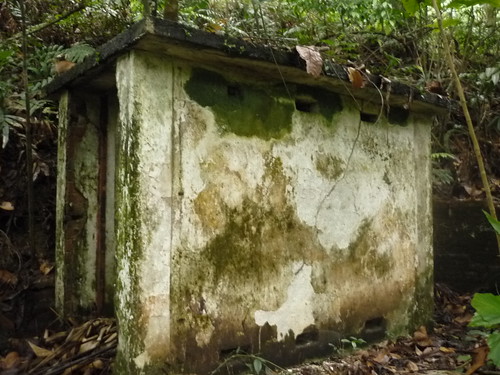
Even within these forests, it is not difficult to discover signs of past human activity.
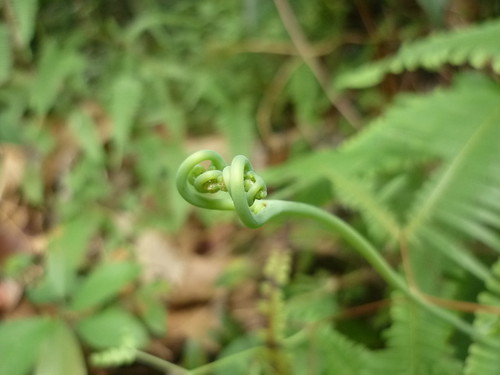
There are small clearings with dense patches of ferns and other secondary vegetation more typical of forest edges. The young fronds always make for interesting photo subjects.
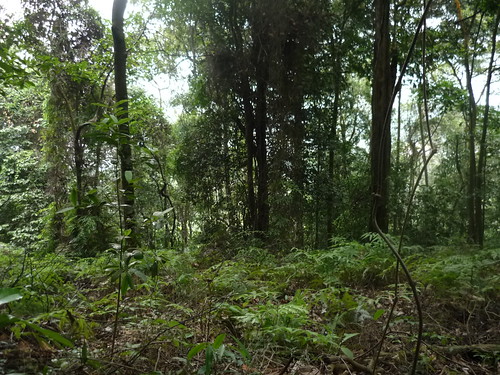
I continued down Seraya Loop.

There are regular reminders to stick to the trail. Still, one wonders if there are people brave or stupid enough to ignore the warning signs, and get themselves killed or seriously injured.
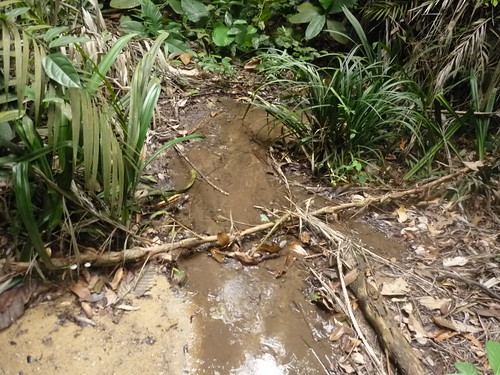
I cross another stream. This one seems more heavily silted up and clogged with forest debris though.
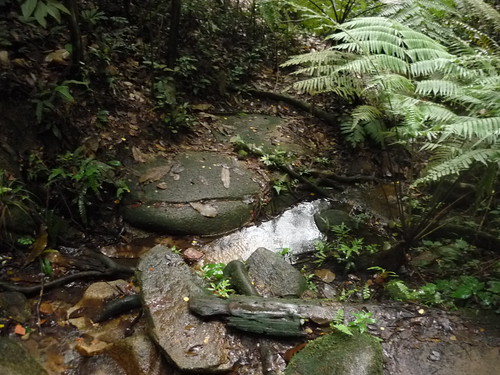
Reaching Jungle Fall Path was somewhat of a relief, as I was quite exhausted by now, and was ready to head back down towards the Visitor Centre.
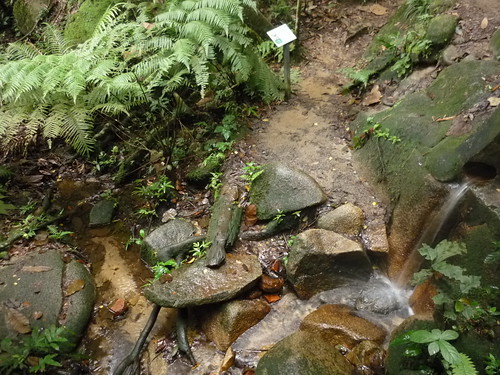
There is something very disappointing when you realise that the waterfall here flows out of a drain.
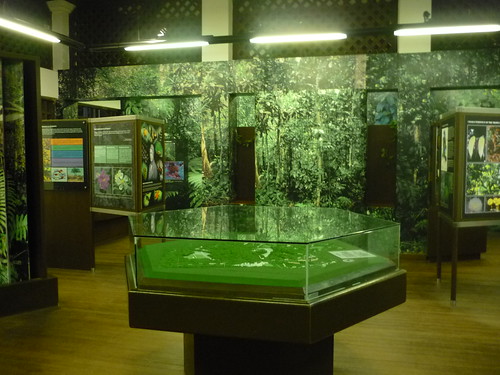
Upon returning to the Main Road, it was a brisk walk downhill back to the Visitor Centre.

As I headed out of the nature reserve and returned to civilisation, I could not help but notice the construction works going on right at the edge of the forest. The impacts of urban development, as well as the inevitable human-animal conflict that results, raise a lot of questions about the long-term survival of this last substantial patch of primary rainforest.
Hopefully, the planned ecological corridor that intends to reconnect Bukit Timah to the Central Catchment Area will help revitalise these forests, giving them a new lease of life as reunited fragments of a larger whole.
Bukit Timah is priceless, not just in terms of its biological treasures, but also in its iconic status as part of our natural heritage. While its continued existence as a Nature Reserve appears secure for now, the forests are in a state of upheaval, slowly changing in the face of degradation and loss of the vital links that once sustained certain elements of this habitat. Hopefully, the forest will weather these changes, and continue to flourish. It may not be the same forest that once captivated Wallace, but it is still a very important forest in our collective psyche, and any further loss and degradation would be an unspeakable tragedy for all.